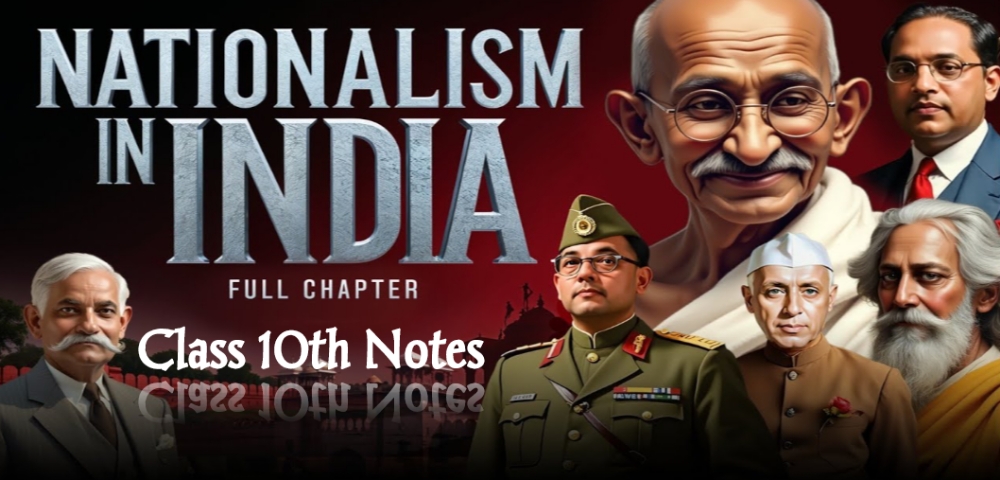The Rise of Nationalism in Europe
Hand Written Note Download PDF
1. Introduction to Nationalism
• Nationalism is the feeling of love, pride, and loyalty towards one’s nation.
• In the 18th and 19th centuries, nationalism emerged as a powerful force in shaping modern nation-states.
• Europe saw intense political and social changes, especially after the French Revolution
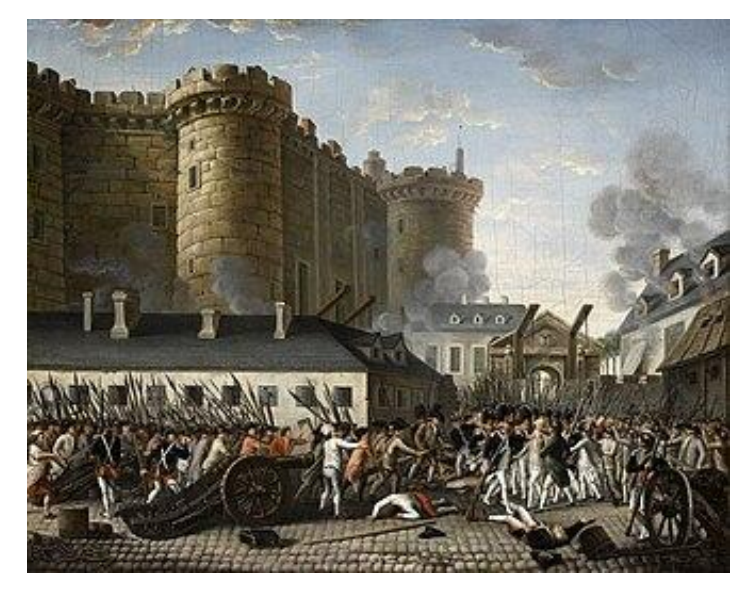
Introduction to Nationalism – Detailed Explanation
What is Nationalism?
• Nationalism refers to a strong sense of attachment, loyalty, and pride in one’s nation, its culture, and its values.
• It encourages people to see themselves as part of a shared identity—based on language, history, territory, traditions, or political ideals.
• It often leads to demands for self-governance, freedom from foreign control, and the creation of nation-states
Emergence in the 18th and 19th Centuries
• Before nationalism, Europe was dominated by monarchies and empires with diverse populations, ruled by royal families with little regard for people’s cultural or linguistic identities.
• The French Revolution (1789) played a crucial role in spreading the ideas of liberty, equality, and fraternity.
• People began to believe that sovereignty should lie with the citizens—not kings—and that they should have a say in how they are governed.
• The growing influence of liberalism and democracy encouraged people across Europe to seek national unity and political participation. Widespread Social and Political Changes
• The Revolution challenged the old feudal structure and stimulated ideas of citizenship and national belonging.
• Napoleon Bonaparte’s conquests spread revolutionary ideals but also led to resistance, as people began to develop their own sense of national identity, especially when threatened by foreign rule.
• There was an explosion of revolutionary movements, particularly in the 1830s and 1848, as various ethnic and cultural groups sought independence and self-determination.
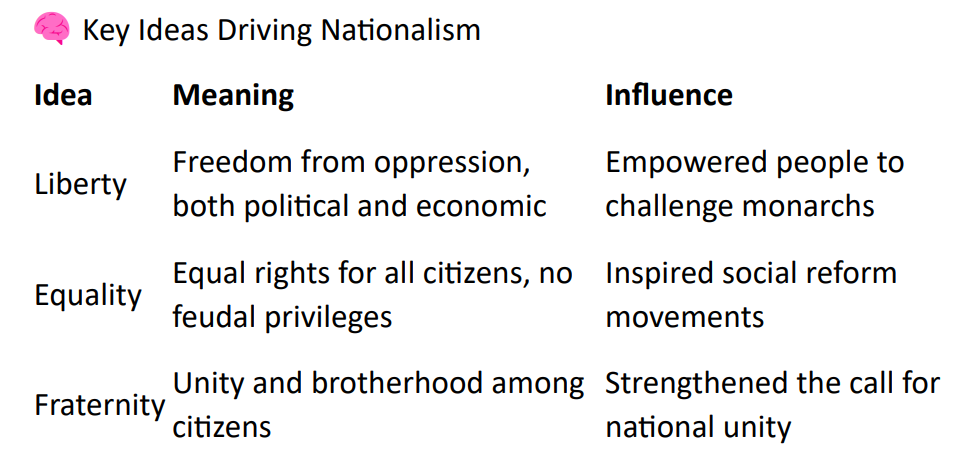
Visual Summary
Imagine a map of Europe in the early 1800s: full of empires (like the Austro-Hungarian and Ottoman Empires), where people spoke
different languages and followed unique customs—but had no national government representing their shared identity. Nationalism turned that patchwork into a canvas of modern nation-states.
2. Impact of the French Revolution (1789)
• Introduced liberty, equality, fraternity – key ideas of nationalism.
• Ended monarchy and feudal privileges in France.
• Inspired people across Europe to fight for freedom and national identity.
• Napoleon carried these ideas through Europe but later became authoritarian, leading to resistance.
Napoleon’s Role in Spreading Nationalism – Detailed Explanation
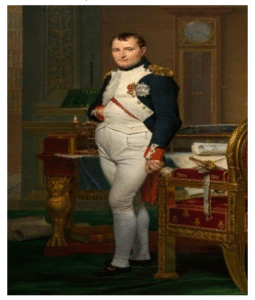
1. Napoleon as a Torchbearer of Revolutionary Ideals
• After the French Revolution, Napoleon rose to power promising to uphold the values of liberty, equality, and fraternity.
• He introduced the Napoleonic Code (1804) in conquered territories:
o Abolished feudal privileges and established legal equality.
o Promoted property rights, meritocracy, and freedom of religion.
o Streamlined administrative systems and modernized governance.
• These reforms were initially welcomed—especially by middle class liberals and reformists in regions like Italy, Germany, and the Netherlands.
2. Shift Toward Authoritarian Rule
• Napoleon crowned himself Emperor of France in 1804, signaling the return of centralized autocracy.
• His governance became increasingly militaristic and expansionist.
o Used force to annex territories and impose French dominance.
o Curbed political dissent, censored the press, and limited civil liberties.
• People realized that while Napoleon brought modern reforms, he also acted like a foreign ruler imposing control.
3. Growing Resistance Across Europe
• Conquered regions started to see Napoleon not as a liberator, but as a conqueror:
• Local populations resented the heavy taxation and forced conscription into French armies.
• Nationalist leaders and thinkers encouraged rebellion against French dominance.
• Spain, Germany, Italy, and Russia saw uprisings and guerrilla warfare.
4. Napoleon’s Downfall and Legacy
• The failed invasion of Russia in 1812 marked a turning point— massive losses and weakening of French power
• A coalition of European powers defeated Napoleon in 1815 at the Battle of Waterloo.
• His fall led to the Congress of Vienna, which aimed to restore monarchies and suppress nationalist movements.
• Ironically, his rule planted the seeds of nationalism that would later drive the unification of Germany and Italy, and inspire independence struggles.
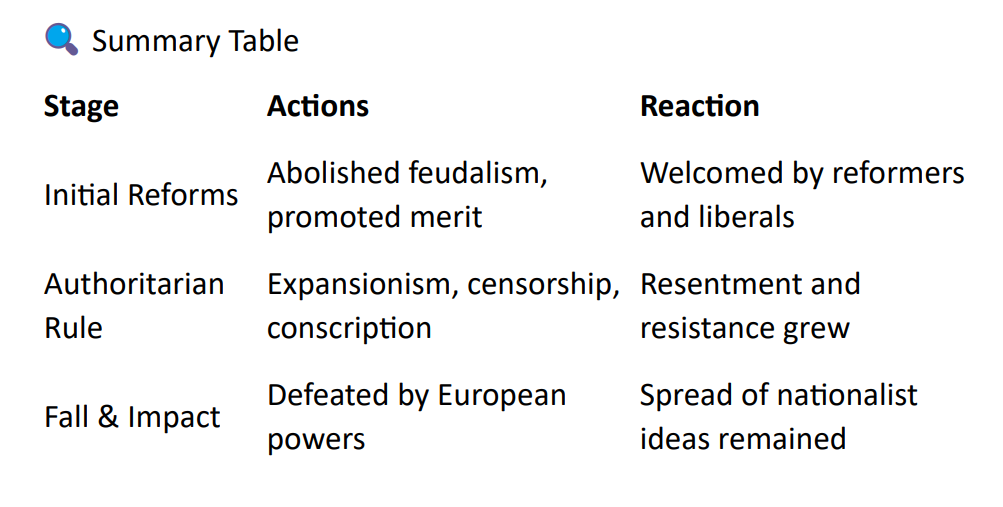
3. The Napoleonic Code (1804)
• Abolished feudal privileges and promoted equality before law.
• Encouraged merit-based society and simplified administrative systems.
• Despite reforms, Napoleon’s conquests were seen as imperialism, sparking nationalist uprisings.
4. Congress of Vienna (1815)
• Held after Napoleon’s defeat to restore old monarchies.
• Aimed to suppress revolutionary and nationalist movements.
• Re-established conservative regimes in Europe.
Congress of Vienna (1815) – Detailed Explanation
1. Historical Context
• After years of revolutionary upheaval and Napoleon’s military campaigns, Europe was politically unstable.
• Napoleon was finally defeated at the Battle of Waterloo in 1815.
• European monarchies wanted to ensure political stability, restore their power, and prevent future revolutions.
2. Main Objectives of the Congress
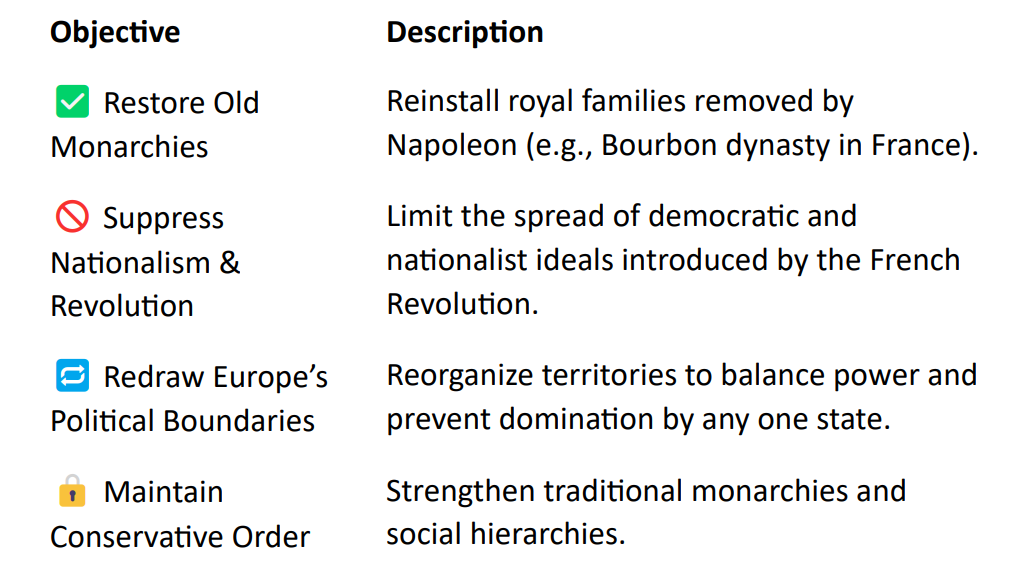
3. Key Participants
The major powers that dominated the Congress were:
• At Austria – represented by Prince Klemens von Metternich (a strong opponent of liberal ideas)
• RU Russia – represented by Tsar Alexander I.
• GB Britain – represented by Lord Castlereagh.
• FR France – surprisingly allowed to participate, represented by Talleyrand.
• PR Prussia – focused on strengthening its position in central Europe.
4. Major Outcomes
Territorial Adjustments
• France’s borders were reduced to pre-Napoleon levels.
• Austria gained control over northern Italy.
• Russia got Poland and Finland.
• Prussia expanded its territory in western Germany.
• The German Confederation replaced the old Holy Roman Empire—though it was still weak. Restoration of Monarchies
• Monarchs returned to power in France, Spain, and various Italian states.
• The idea was to ensure that legitimate rulers (those of royal blood) governed their rightful territories. Suppression of Nationalism
• Nationalist demands in regions like Italy, Germany, and Poland were ignored.
• Censorship, surveillance, and repression became tools to suppress liberal movements.
• Metternich’s system relied on alliances and spies to prevent revolutions.
5. Conservative Reaction
• The Congress marked the beginning of a “Conservative Era” in Europe (1815–1848).
• Governments focused on preserving monarchy, religion, and aristocracy.
• Rebellions and demands for democracy and national unity were often crushed by force.

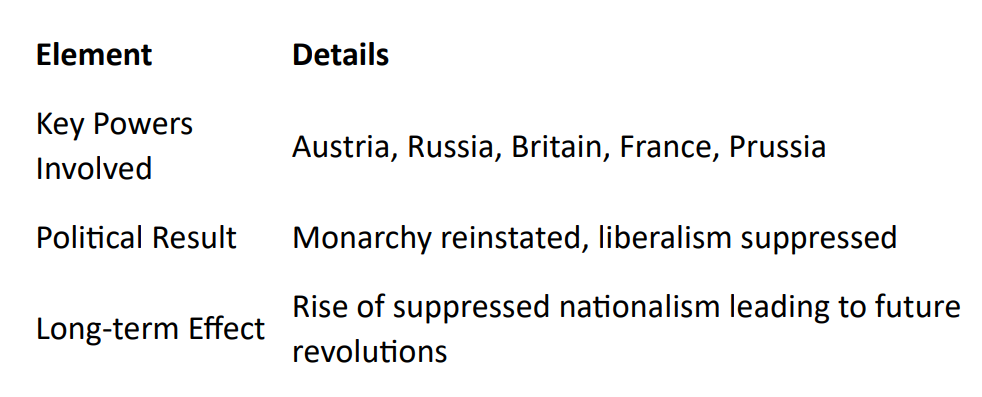
5. Revolutionary Movements (1830 & 1848)
1830 Uprisings:
• Belgium broke away from Netherlands.
• Greek War of Independence (against Ottoman Empire).
• French July Revolution led to constitutional monarchy. 1848 Revolution:
• Known as the “Spring of Nations.”
• Demanded democratic governance and national unification.
• Although mostly suppressed, it sowed seeds for future change. Revolutionary Movements of 1830 – Detailed Explanation
1. Backdrop of 1830 Revolutions
• The Congress of Vienna (1815) restored old monarchies and suppressed liberal ideas.
• But the spirit of nationalism, liberalism, and republicanism kept growing beneath the surface.
• These ideals sparked revolts across Europe, especially among ethnic groups and middle-class liberals.
2. BE Belgium’s Independence from the Netherlands
• Belgium was forced to unite with the Dutch under the Kingdom of the Netherlands (1815), despite having different:
o Language (Belgian spoke French, Dutch spoke Dutch),
o Religion (Belgium was Catholic, Dutch were Protestant),
o Economies (Belgium was industrial, Dutch were trade focused).
• In 1830, protests turned into a full-scale revolution:
• With the support of France and Britain, Belgium declared independence.
• It became a constitutional monarchy, and Leopold I was made king.
3. GR Greek War of Independence (1821–1832) (Note: began earlier but climaxed around 1830)
• Greece had been under Ottoman rule for centuries.
• Inspired by:
o The French Revolution,
o Support from Romantic thinkers in Europe who saw Greece as the cradle of Western civilization.
• Greek nationalists launched a rebellion in 1821:
o It gained support from Britain, France, and Russia.
o Famous figures like Lord Byron even fought alongside Greek rebels.
• By 1832, Greece was recognized as an independent nation through the Treaty of Constantinople.
4. 🇫🇷 French July Revolution (1830)
• After the fall of Napoleon, the Bourbon monarchy was restored in France.
• King Charles X, a conservative ruler, tried to reverse revolutionary gains:
o He dissolved parliament,
o Censored the press,
o Limited voting rights
• This triggered massive protests in July 1830:
• Charles X was forced to abdicate.
• A more liberal monarchy was established under Louis Philippe, known as the “Citizen King”.
• Though still a monarchy, it was constitutional—with some civil liberties and representation
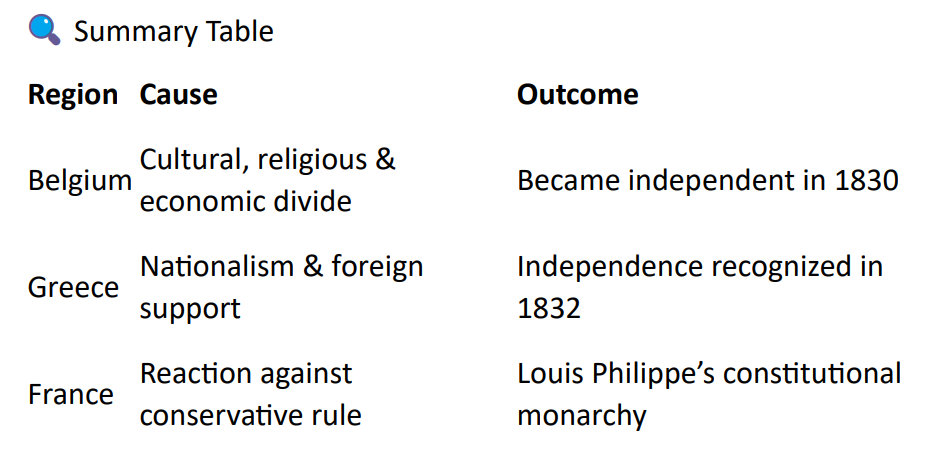
6. Role of Liberal Nationalists
• Mostly middle-class educated Europeans.
• Believed in constitutional governance, freedom of press, and equality before law.
• Advocated economic freedom and national unification.
Role of Liberal Nationalists – Detailed Explanation
1. Who Were the Liberal Nationalists?
• Mostly middle-class Europeans: lawyers, teachers, merchants, writers, and government officials.
• Educated and influenced by Enlightenment thinkers and the legacy of the French Revolution.
• Often members of secret societies like Young Europe, pushing for political change behind the scenes.
2. Core Beliefs & Ideologies
Constitutional Governance
• Favoured written constitutions and representative parliaments.
• Wanted to end absolute monarchies and promote people’s sovereignty.
• Believed governments should protect civil liberties and be accountable to citizens.
Freedom of Press & Expression
• Demanded free press, independent journalism, and unrestricted access to information.
• Believed censorship was a tool of oppressive regimes.
• Considered political debate essential for national progress.
Equality Before Law
• Opposed feudal privileges and aristocratic dominance.
• Supported uniform legal codes that applied to all citizens regardless of birth or class.
• Promoted merit-based systems over hereditary rights.
3. Economic Aspirations
• Supported the creation of national markets: removal of internal customs, trade barriers, and fragmented taxes.
• Believed economic unity would strengthen national identity and power.
• Wanted to encourage entrepreneurship, industrialization, and free trade across regions.
4. Push for National Unification
• Opposed politically fragmented regions ruled by foreign powers
(e.g., Austria controlling Italian and German states).
• Championed the idea of nation-states: territories united by common language, culture, and history.
• Inspired major unification movements:
• In Italy: Giuseppe Mazzini’s Young Italy promoted republican nationalism.
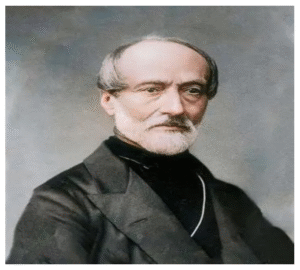 Giuseppe Mazzini
Giuseppe Mazzini
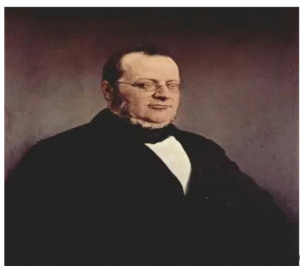 count cavour
count cavour
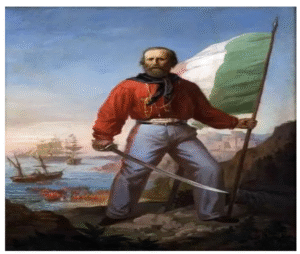 Garibaldi
Garibaldi
• In Germany: Intellectuals and reformers pushed for unity under constitutional leadership.
5. Challenges Faced
• Faced harsh repression from conservative regimes that feared revolutions.
• Secret societies were often banned, members arrested or exiled.
• Many revolts failed initially, but laid the ideological foundation for future success.
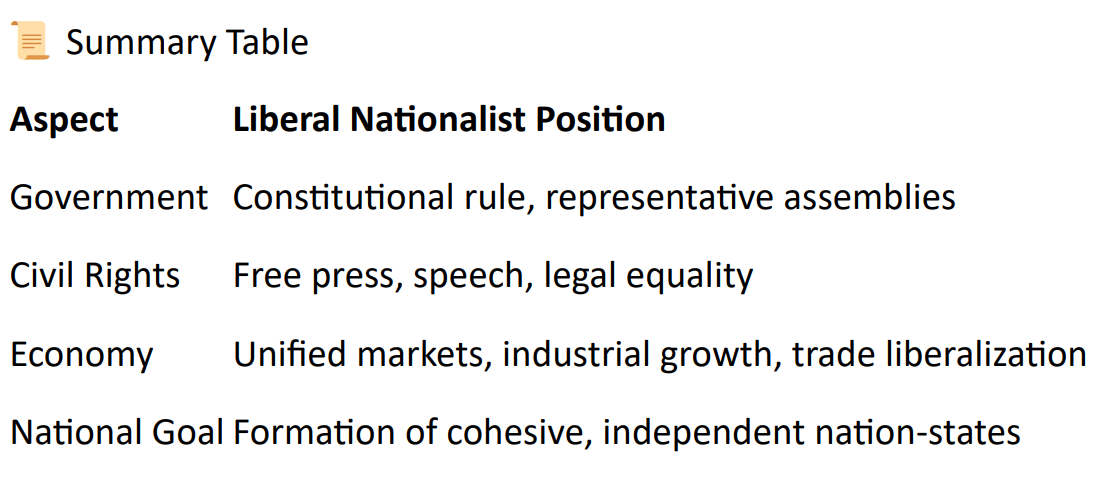
7. Unification of Italy
• Divided into kingdoms and controlled by foreign powers (e.g., Austria).
• Key leaders:
o Giuseppe Mazzini: The soul – founded Young Italy.
o Count Cavour: The brain – formed strategic alliances.
o Giuseppe Garibaldi: The sword – led military campaigns.
• United by 1870 under King Victor Emmanuel II.
🇮🇹 Unification of Italy – Detailed Explanation
1. Background
• Before the 19th century, Italy was not one unified country. It was a patchwork of kingdoms, duchies, and foreign-controlled territories.
• Key regions:
• Lombardy and Venetia – under Austrian rule
• Kingdom of Sardinia-Piedmont – independent and progressive
• Papal States – under the Pope’s authority
• Kingdom of the Two Sicilies – ruled by the Spanish Bourbons
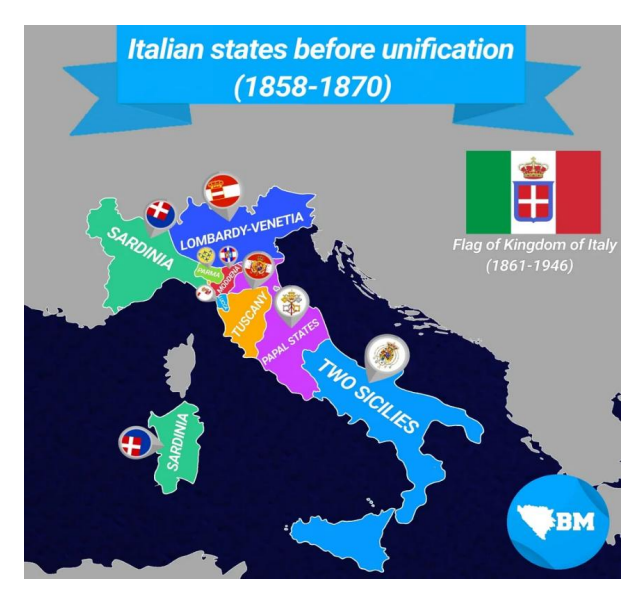
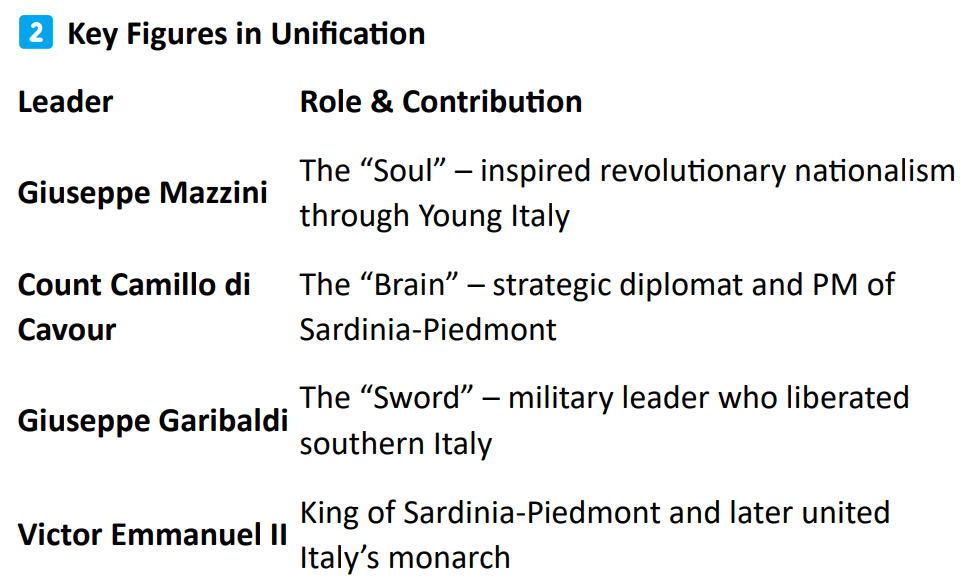
3. Role of Giuseppe Mazzini
• Founded Young Italy in 1831 to promote national unity and republican ideals.
• Believed in a united, democratic Italy, free from foreign rule.
• Though most uprisings he inspired failed, he ignited the fire of nationalism across Italian states.
4. Diplomatic Moves by Count Cavour
• Prime Minister of Sardinia-Piedmont (1852).
• Strengthened the kingdom’s economy, military, and infrastructure.
• Formed an alliance with France (Napoleon III) against Austria.
• In 1859, after war with Austria:
• Sardinia gained Lombardy
• Sparked revolts in other northern states wanting to join Sardinia
5. Giuseppe Garibaldi’s Military Campaigns
• Led the famous Expedition of the Thousand in 1860:
o With his volunteer army (the Red Shirts), he sailed to Sicily and defeated Bourbon forces.
o Liberated Southern Italy—Sicily and Naples.
• Instead of ruling independently, Garibaldi handed over the territory to Victor Emmanuel II, favoring national unity.
6. Unification Milestones
Year Event
1859 Sardinia-Piedmont gains Lombardy from Austria
1860 Garibaldi liberates southern Italy
1861 Kingdom of Italy proclaimed under Victor Emmanuel II
1866 Venetia added after war against Austria
1870 Rome annexed after France withdrew troops (due to Franc Prussian War)
7. Final Shape of Italy
• With the capture of Rome in 1870, Italy’s unification was complete.
• Rome became the capital of unified Italy.
• The Pope retained only the Vatican, and the rest of the Papal States joined the nation. Summary Points
• Italy united through nationalist inspiration, smart diplomacy, and military conquest.
• Despite differences in vision (Mazzini’s republicanism vs. Cavour’s constitutional monarchy), leaders joined forces.
Summary Points
• Italy united through nationalist inspiration, smart diplomacy, and military conquest.
• Despite differences in vision (Mazzini’s republicanism vs. Cavour’s constitutional monarchy), leaders joined forces.
• The movement ended centuries of division and foreign domination.
8. Unification of Germany
• Led by Otto von Bismarck, the Prussian Chancellor.
• Used “Blood and Iron” policy – wars with Denmark, Austria, and France.
Unified by 1871 under
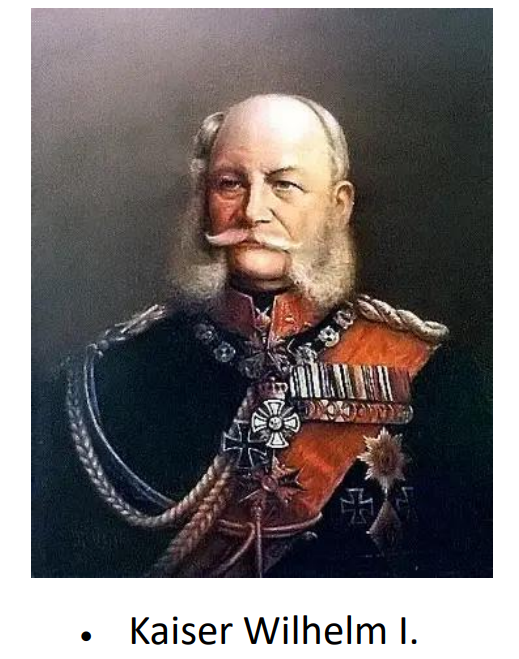
Unification of Germany – Detailed Explanation
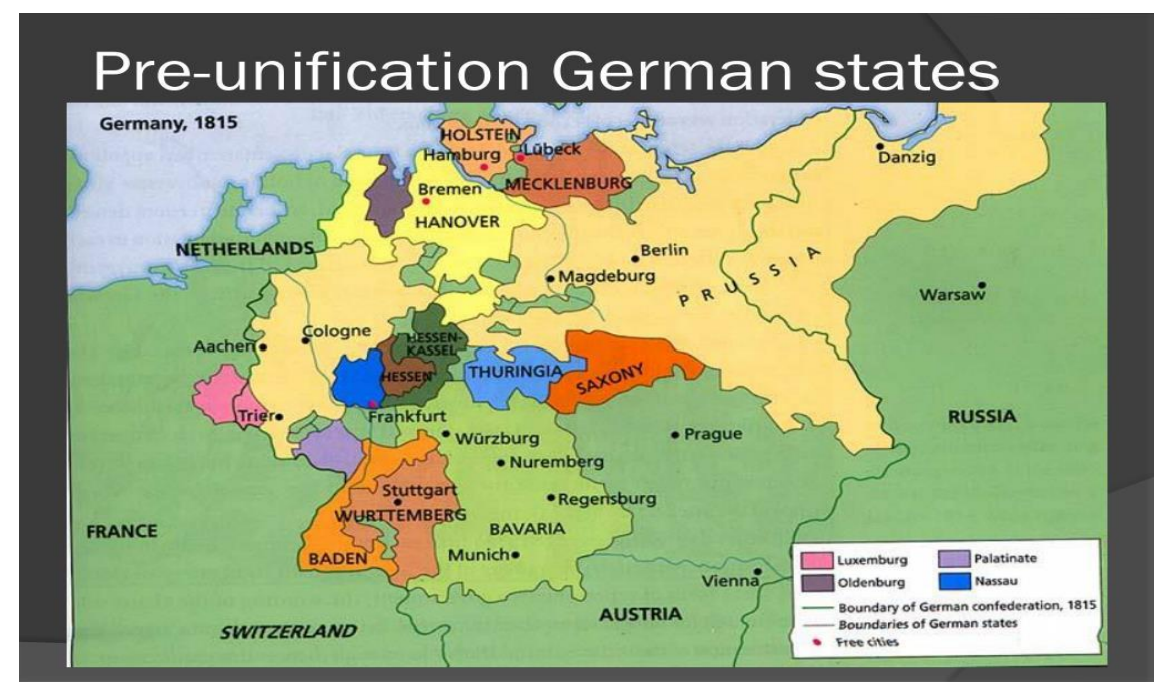
1. Germany Before Unification
• In the early 19th century, “Germany” referred to over 39 independent states under the German Confederation.
• Dominant powers: Austria and Prussia.
• These states shared language, culture, and history, but lacked political unity.
• Austria opposed unification to maintain control; Prussia emerged as the strongest force pushing for unity.
2. Role of Otto von Bismarck
• Bismarck, the Prime Minister of Prussia (appointed in 1862), was the chief architect of unification.
• Famous for his “Blood and Iron” policy: believed that military power and diplomacy, not speeches and majority votes, would unify Germany.
• He used strategic wars to achieve unification step by step.
3. Three Wars of Unification
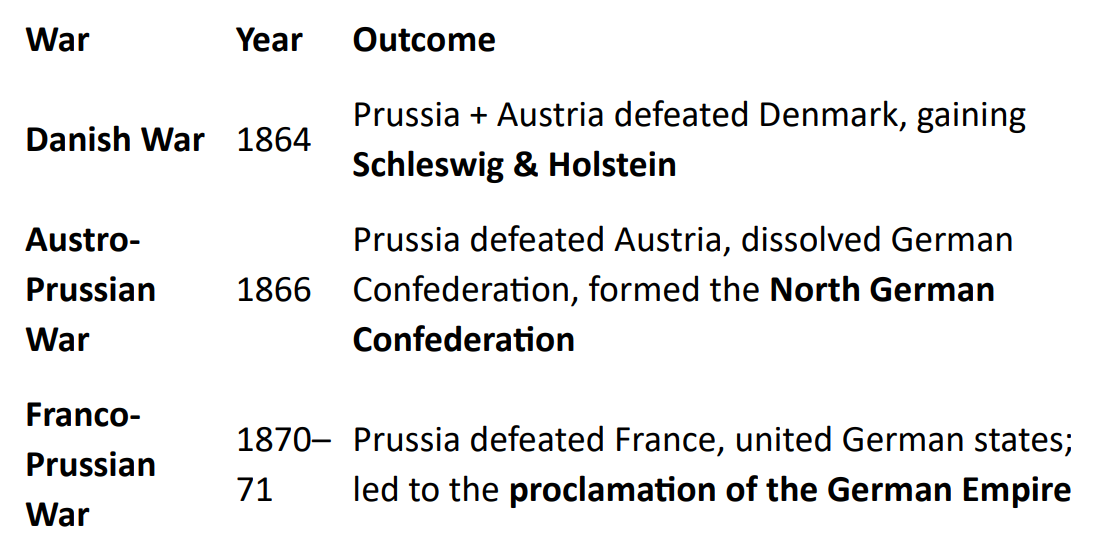
4. Key Events Leading to Unification
🇩🇰 Danish War (1864)
• Denmark tried to incorporate Schleswig and Holstein, provoking conflict.
• Bismarck allied with Austria to defeat Denmark.
• After the war, tensions grew over the control of the annexed territories.
🇦🇹 Austro-Prussian War (1866)
• Bismarck deliberately provoked Austria over Schleswig– Holstein.
• War lasted only 7 weeks (also called the Seven Weeks’ War).
• Result: Austria was defeated and excluded from German affairs.
• Prussia formed the North German Confederation under its leadership.
🇫🇷 Franco-Prussian War (1870–71)
• Bismarck manipulated tensions between France and Prussia to spark war.
• Southern German states, feeling threatened by France, joined Prussia.
• French Emperor Napoleon III was captured.
• Victory stirred nationalist pride and united southern states with the North German Confederation.
5. Proclamation of the German Empire
• On January 18, 1871, the German Empire was declared in the Hall of Mirrors at Versailles, France.
• King Wilhelm I of Prussia became Kaiser (Emperor) of unified Germany.
• Bismarck became the first Chancellor.
6. Aftermath & Legacy
• Germany emerged as a powerful and industrialized empire, rivaling Britain and France.
• Unification shifted power balance in Europe, leading to new alliances and tensions.
• The new empire was conservative, dominated by Prussian elites and military power.
• Nationalism remained strong, but minorities like Poles and Danes were suppressed.
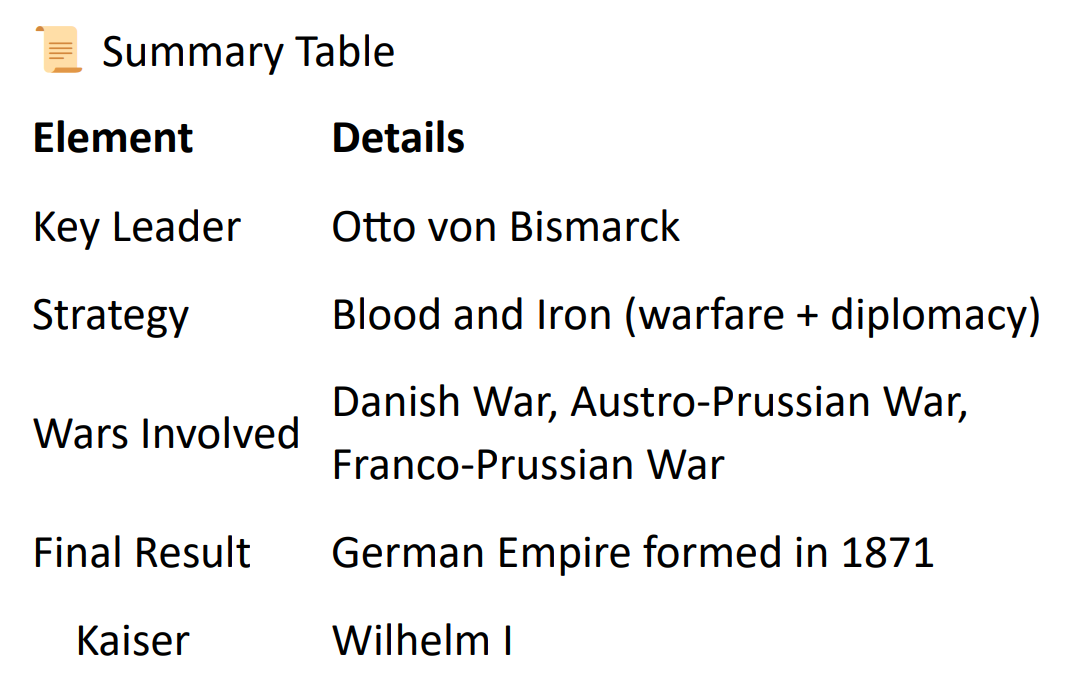
The Strange Case of Britain – Detailed Explanation
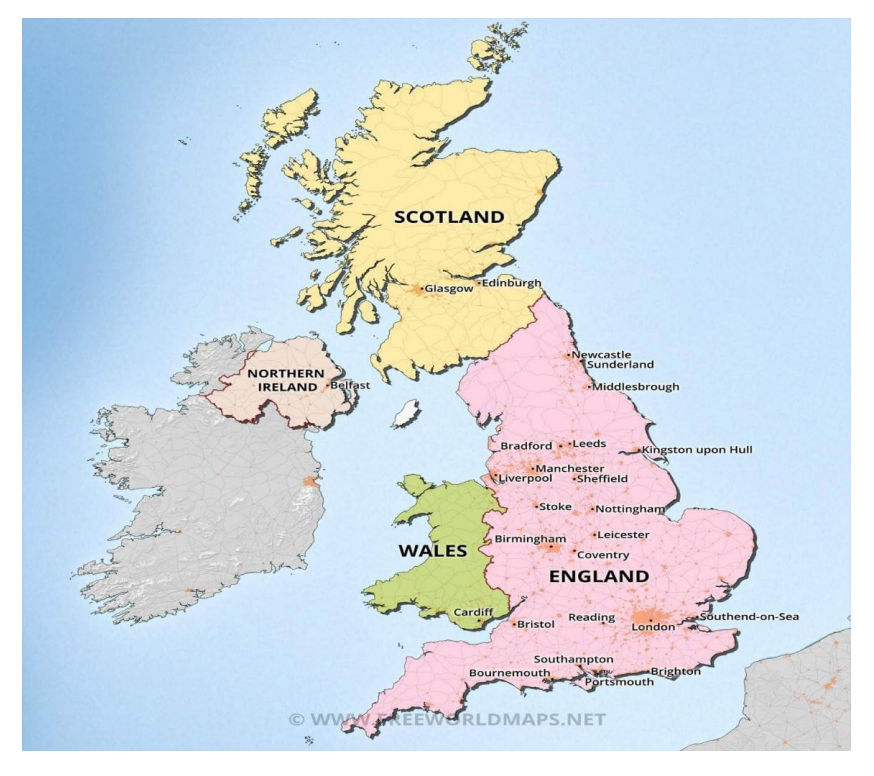
1. Why Is It Called ‘Strange’?
• Most European countries became unified nation-states through revolutions, armed uprisings, or diplomatic conflicts.
• Britain, however, gradually transformed into a nation without any widespread bloodshed or civil war.
• The process was largely internal and parliamentary, not driven by popular movements or militant nationalism.
2. Historical Background
• The British Isles included England, Wales, Scotland, and Ireland, each with distinct cultures, languages, and traditions.
• Political unification was achieved through acts of union, rather than popular revolution.
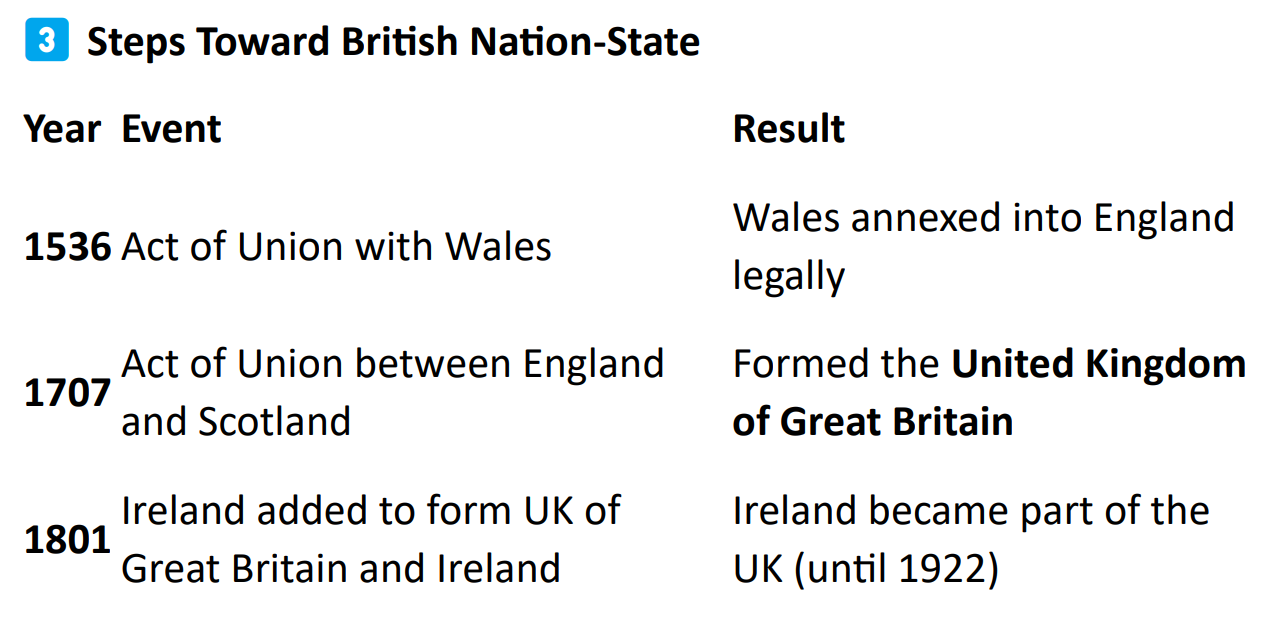
4. Nature of British Nationalism
• The English culture became dominant:
o English language was promoted in schools and administration.
o British Parliament and law were largely controlled by English elites.
o Symbols like the Union Jack (flag), national anthem, and British monarchy reflected English traditions.
• Other cultures like Scottish Gaelic, Welsh, and Irish Catholic identity were suppressed or marginalized.
5. Resistance in Ireland
• Ireland posed the biggest challenge to British unification.
• Majority of Irish population was Catholic, while ruling British elites were Protestant.
• Ireland witnessed revolts, especially during the Great Irish Famine (1845–1849).
• Irish nationalists demanded self-rule, leading eventually to:
• The creation of Irish Free State in 1922 (today, Republic of Ireland).
• Northern Ireland remained a part of the UK.
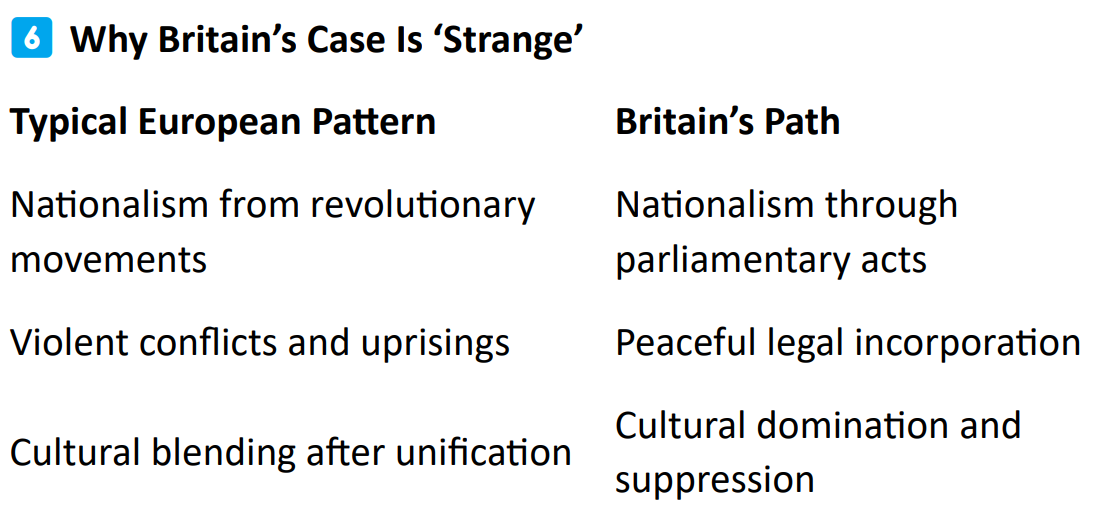
Summary
• Britain did not experience mass revolutions or wars for national unification.
• It used legal acts and parliamentary decisions to incorporate neighboring territories.
• But this process led to cultural domination rather than true national integration—especially visible in the Irish resistance.
9. Austro-Hungarian Empire & Ottoman Empire
• Home to diverse ethnic groups like Slavs, Czechs, Croats, Serbs.
• Nationalism led to conflicts within these multi-ethnic empires.
• People sought independence and separate nationhood.
10. Cultural and Intellectual Contributions
• Romanticism glorified national identity through art, literature, and folklore.
• Language, songs, and traditions became symbols of unity and pride.
• German philosopher Johann Gottfried Herder promoted the idea of “Volk” or common people.
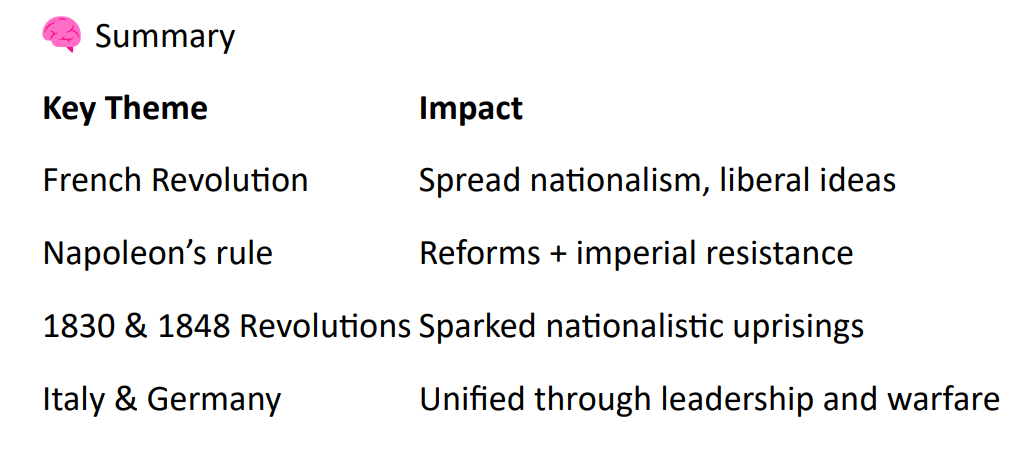

THE END
HOME PAGE
Official Website- Physics Wallah
iOTA CLASSES has been working for the last 6 years at youtube ( online mode) but from last year ( 2024) we are running both online and offline,
With the cooperation of students , parents , our colleagues and team, we have gained satisfactory results,
And working more enthusiastically for the better aspirations. image of 2024 class 10th result [CBSE and BSEB( ENG. Med)]

